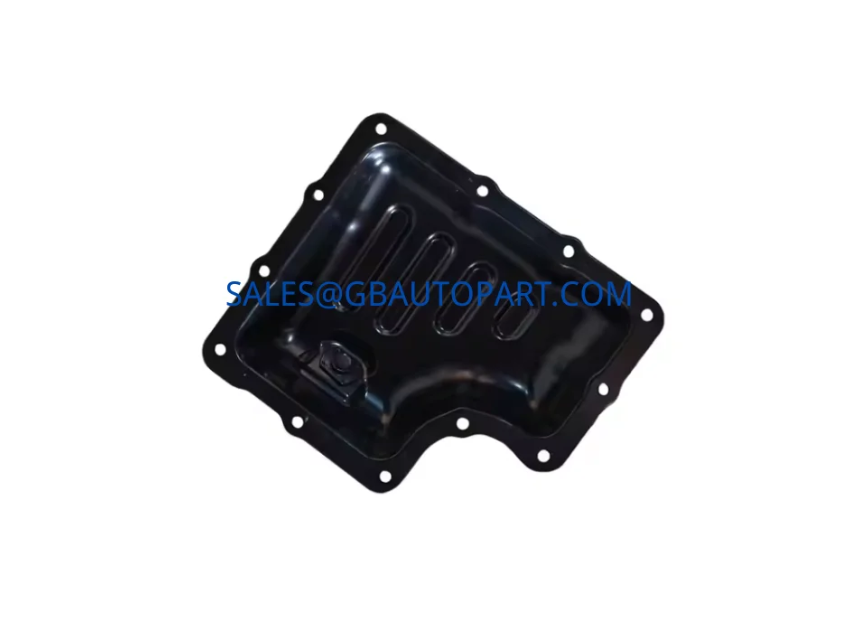In the complex world of automotive mechanics, countless components work in harmony to power your vehicle. While we often focus on the high-profile parts like the engine block, pistons, and turbochargers, some of the most critical players operate out of sight, fulfilling essential, life-sustaining roles. One such component is the oil pan, and for many Hyundai and Kia models, the part number 21510-03930 represents a genuine, high-quality guardian of engine longevity. This article dives deep into the purpose, function, and importance of this specific part, offering a comprehensive guide for vehicle owners who want to understand what truly keeps their engine running smoothly.
An engine’s lifeblood is its oil. Without a constant supply of clean, cool lubricant, the intense friction between moving parts would quickly lead to overheating and catastrophic failure. The oil pan is the crucial reservoir at the very bottom of the engine, holding the majority of this vital fluid. It’s far more than just a bucket; it’s an engineered component designed to protect the oil supply and facilitate its circulation. As a result, understanding this part is fundamental to proactive vehicle maintenance, ensuring you are equipped to make informed decisions for your car’s long-term health.
Understanding the Oil Pan’s Core Function

The oil pan is an essential component of an internal combustion engine’s lubrication system. Think of it as the engine’s sump or reservoir. Its primary function is to store engine oil when the engine is not running and to collect it as it drains down from the engine’s various parts. When the engine is in operation, the oil pump draws oil from the pan through a strainer and circulates it under pressure throughout the engine. This constant flow lubricates critical moving parts like the crankshaft, camshaft, and piston rings, minimizing friction and wear.
Furthermore, the oil pan plays a vital role in cooling the engine oil. As the oil returns to the pan, it comes into contact with the pan’s large surface area. This exposure to the ambient air helps dissipate some of the heat the oil absorbed while circulating through the hot engine. This cooling effect is crucial for maintaining the oil’s viscosity and properties, preventing it from breaking down under extreme temperatures. A well-designed oil pan is thus a passive but highly effective heat exchanger.
The Critical Role of the Oil Pan in Engine Performance
An oil pan’s contribution to overall engine performance cannot be overstated. Its seamless operation is directly tied to the engine’s health and longevity. The 21510-03930 part, specifically engineered for its designated vehicle models, ensures this seamless integration and optimal performance.
Lubrication and Debris Protection
The oil pan’s design is critical for ensuring a steady and reliable oil supply. Inside the pan, a pickup tube with a screen strainer is positioned to draw oil. This strainer is a preliminary filter, catching larger contaminants like metal shavings and sludge before they can enter the oil pump and circulate through the engine. The precise positioning of this tube and screen is essential for preventing the pump from drawing air, which would lead to a sudden loss of oil pressure and severe engine damage. The 21510-03930 part is designed with this precise positioning in mind, guaranteeing that the oil pickup is always submerged and protected.
Oil Circulation and Heat Dissipation
Beyond simple storage, the oil pan’s shape and internal baffling (if present) are engineered to manage oil flow during various driving conditions, from idling to high-speed cornering. This prevents “oil starvation,” a condition where the oil sloshes away from the pickup tube, leaving the pump with nothing to draw. The thermal regulation provided by the pan’s surface area also ensures that the oil stays within an optimal temperature range. Overheated oil can thin out and lose its lubricating properties, while oil that is too cool may not flow as efficiently. A well-designed pan, like the 21510-03930, contributes to maintaining this crucial balance.
Structural Integrity and Protection
Positioned at the lowest point of the engine, the oil pan is vulnerable to impacts from road debris, bumps, and other hazards. For this reason, it must be constructed from a durable material, such as stamped steel or cast aluminum, to withstand potential damage. A cracked or punctured oil pan can lead to a rapid and complete loss of engine oil, a scenario that can ruin an engine in a matter of minutes. The structural integrity of the 21510-03930 part is therefore a primary concern, engineered to provide robust protection for the oil and the sensitive components above it.
Recognizing the Signs of a Failing Oil Pan
While a well-maintained oil pan can last the lifetime of a vehicle, certain issues can necessitate its replacement. Knowing the signs of a failing oil pan is crucial for preventing a small problem from escalating into an expensive catastrophe.
The most obvious symptom is an oil leak. You might notice a puddle of fresh oil under your parked car. The leak can originate from a damaged pan, a failed gasket, or loose drain plug. A small drip can indicate a minor issue, but a substantial leak suggests a more serious problem.
Another sign is visible damage to the pan itself. If you’ve driven over a curb or a large piece of debris, it’s wise to inspect the underside of your car for dents, cracks, or punctures in the oil pan. Even a seemingly minor dent can compromise the pan’s integrity and affect oil circulation.
Finally, a low oil pressure warning light on your dashboard can be a symptom. This light signals that there isn’t enough oil pressure to properly lubricate the engine. While this could be due to other issues, it can also be a direct result of a leak from a failing oil pan. Ignoring this warning can lead to rapid and catastrophic engine failure.
Key Features of the 21510-03930 Part and Its Replacement
When it comes time to replace an oil pan, choosing the right part is paramount. The 21510-03930 part number signifies a component that is a direct replacement for specific Hyundai and Kia models, ensuring a precise fit and optimal performance.
Material and Engineering Excellence
The 21510-03930 oil pan is typically made from stamped steel, a material chosen for its balance of durability and cost-effectiveness. The manufacturing process ensures uniform thickness and strength across the entire part. The pan’s design incorporates specific contours and bolt patterns that align perfectly with the engine block, ensuring a tight, leak-proof seal. The quality of the accompanying gasket or sealant is also critical, as it bridges the gap between the pan and the engine block, preventing any oil from escaping.
The Importance of Direct-Fit Parts
Using a direct-fit, OEM-equivalent part like the 21510-03930 is crucial for several reasons. Generic or low-quality aftermarket parts may not have the exact dimensions, leading to improper seating, potential leaks, and even damage to the engine. The precise bolt-hole alignment, the depth of the pan, and the placement of the drain plug are all engineered to work in harmony with your vehicle’s specifications. Choosing a part with the correct number guarantees that it meets the manufacturer’s quality and performance standards. Furthermore, the oil pan replacement process is labor-intensive, often requiring the removal of other components to access the pan. Using a high-quality part ensures that the job is done right the first time, saving you from a costly and time-consuming re-do.
Conclusion
The 21510-03930 oil pan may seem like a simple part, but it is an indispensable component in the complex ecosystem of your vehicle’s engine. Its role as a reservoir, heat exchanger, and protective shield is fundamental to ensuring your engine receives the consistent lubrication it needs to function properly. By understanding the signs of a failing oil pan and recognizing the importance of using a high-quality, direct-fit replacement part like the 21510-03930, you are taking a proactive step toward safeguarding your vehicle’s long-term health and performance.
Prioritizing the integrity of your oil pan is a decision that pays dividends in engine longevity and peace of mind. As a fundamental guardian of your engine’s lifeblood, this seemingly humble component proves that some of the most critical heroes work silently, beneath the surface.
FAQ
Q: Can I drive with a cracked or leaking oil pan? A: No, absolutely not. Driving with a damaged or leaking oil pan is extremely risky. A small leak can quickly turn into a major one, leading to a complete loss of oil and, consequently, catastrophic engine failure.
Q: What is the difference between an oil pan and an oil sump? A: There is no difference. “Oil sump” is another common term for an oil pan, particularly in British English. Both terms refer to the same component that holds the engine oil.
Q: Is the 21510-03930 a genuine OEM part? A: The 21510-03930 part number is a manufacturer’s identification code, meaning it is a genuine OEM part for specific Hyundai and Kia models. Using this number helps ensure you receive the correct, high-quality replacement.
Q: What’s the typical cost to replace an oil pan? A: The total cost varies, but a significant portion of the expense comes from labor. While the part itself might be a small investment, the labor to remove and replace it is often substantial. This highlights why using a quality part the first time is so important.






